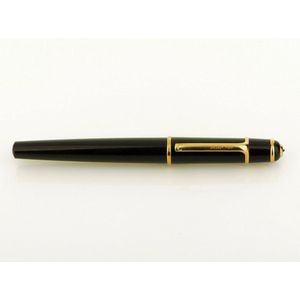Antique Malachite Pietra Dura Seal with Initials, 7cm
You must be a subscriber, and be logged in to view price and dealer details.
Subscribe Now to view actual auction price for this item
When you subscribe, you have the option of setting the currency in which to display prices to $Au, $US, $NZ or Stg.
- Malachite - Malachite is bright copper-green coloured stone with concentric layers which displays distinct contrasting veinings. It has been valued in the past for making or decorating small precious objects such as clocks, jewellery, dishes and so. In the Orient it was used for snuff bottles and in Russia and was favoured by the Faberge workshop. larger pieces were used for table tops.
The principal source of supply was Russia but it is to be found in other regions such as Southern Africa, Mexico, Australia and France.
Malachite glass is a manufactured material that was intended to resemble malachite, but often bears more resemblance to a veined coloured marble due to its lower gloss finish and lack of concentric layers. Malachite glass was manufactured by many glassworks in the 19th century including Loetz in Austria and others in Bohemia and Davidson's Greener's and Sowerby in north eastern England.
It was particularly used for scent bottles, bowls, and small vases often decorated with nymphs.
Malachite glass has been manufactured continuously since the late nineteenth century, most is unmarked and it is difficult to distinguish the age or manufacturer of most commercial pieces. - Pietra Dura / Florentine Mosaic - Pietre dura, also known in English as "Florentine mosaic" is a decorative art that originated in Renaissance Italy and involves the creation of intricate, multi-layered inlaid designs using a variety of different coloured stones. The name "pietre dura" is Italian for "hard stones," and refers to the use of hard, durable materials such as marble, agate, jasper, and other semiprecious stones in the creation of the designs.
The origin of pietre dura can be traced back to ancient Rome, where the technique was used to create intricate inlaid designs for mosaic floors, walls, and other architectural elements. During the Renaissance, the technique was revitalized in Italy and became particularly associated with the city of Florence. The court of the Grand Duke of Tuscany, Cosimo I de' Medici, was a major patron of pietre dura and employed many of the leading artists and craftsmen of the time to create a wide range of objects, from small items like jewelry boxes and vases to large panels and furniture.
In the 19th century, pietre dura was used to create a wide range of decorative objects, from furniture and decorative panels to small items like jewelry boxes, vases, and picture frames. During this time, the technique was particularly popular in Europe, where it was used to create elaborate pieces of furniture and other decorative objects for the wealthy and aristocratic classes.
In addition to traditional pietre dura objects like cabinets, tables, and vases, the 19th century saw the development of new forms of pietre dura, such as book covers, cigar boxes, and other small items. This was largely due to the advent of new, more affordable production techniques and materials, which allowed for the creation of pietre dura objects on a larger scale and at a lower cost.
This item has been included into following indexes:
Visually similar items

An antique-style Japanese Wakizashi and Saya, with decorative tsuba and kashira and cord-wrapped tsuka, in a black saya, length 69 cm (overall)

Four various Geo/Victorian hallmarked sterling silver sugar nips, including London 1825; Exeter 1850; London 1885?; and one other. Wt. 133g (total)

Cartier Diabolo de Cartier Rollerball pen, black composite body, yellow golden finish trim details, and sapphire blue resin cabochon cap, refereance: 180001, (A/F)

Vintage Sheaffer fountain pen and pencil set Pat.Aug 25.08, mottled tan and black with gold metal detail
